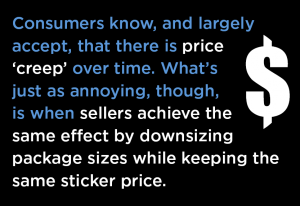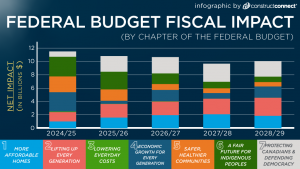Where are we on the recession watch? In a nutshell, the flow of events is confusing. There are certainly reasons to suspect slower economic times are heading our way, and the difficulties that have arisen in the banking sector have done nothing to lighten the mood. Although, in a strange and unexpected twist, financial sector turmoil may be serving a beneficial purpose through causing the Fed to become more restrained in its interest rate tightening measures.
 The latest rate hike was just 25 basis points (where 100 bps = 1.00%), only half the 50 bps climb that was taken for granted each time in 2022. The upper limit for the federal funds rate is now 5.00%, which many analysts (me included) think is restrictive enough. It establishes a key policy-setting rate that has gone beyond merely ‘neutral’.
The latest rate hike was just 25 basis points (where 100 bps = 1.00%), only half the 50 bps climb that was taken for granted each time in 2022. The upper limit for the federal funds rate is now 5.00%, which many analysts (me included) think is restrictive enough. It establishes a key policy-setting rate that has gone beyond merely ‘neutral’.
Banking distress can perhaps be characterized as one of those ‘unintended consequences’ that arise from time to time when there is a shift in governing frameworks. But the Fed has an intended consequence in mind, a deceleration in GDP and a lifting of the unemployment rate, that is taking on the appearance of being unnecessarily punitive.
Without further ado, let’s proceed to an examination of some of the most recent information on the economy appearing in public and private sector data releases.
(1) In the press release accompanying its latest Consumer Confidence report, the Conference Board says there are early indications consumers are scaling back their plans to purchase homes, autos, major appliances, and vacation packages.
While the overall Consumer Confidence index is still reasonably okay at 102.9 (where 1985 = 100.0), the Expectations Index remains below 80.0, where it’s been in 11 of the past 12 months. An Expectations Index value below 80 has often, in the past, signaled that a recession is coming.
(2) When considering the prospects for ‘real’ (i.e., inflation-adjusted) gross domestic product (GDP) growth, a key determinant is consumer spending, since it’s approximately 70% of the total. In turn, a little less than half of consumer spending is driven by retail sales. Contributing a slightly higher proportion of consumer spending are purchases of services.
There’s an inflation component in the nominal dollars reported for retail sales. Consumers know, and largely accept, that there is price ‘creep’ over time. What’s just as annoying, though, is when sellers achieve the same effect by downsizing package sizes while keeping the same sticker price.
Nevertheless, there is a significant share of retail sales that consists of ‘volume’ change. In Graph 1, the volume advance is captured in the gap between the two lines, pitting a lower y/y change in the CPI against a higher y/y change in retail sales in most years.
There are three periods in Graph 1 when this is not the case: (1) in the depths of the 2008-2009 recession; (2) at the beginning of the pandemic when retail sales, in essence, fell through a trap door; and (3) during the past year, when inflation has taken off and nominal retail sales have not quite kept pace.
Period (3) provides one key explanation for why the Federal Reserve is continuing, rightly or wrongly, to be so adamant about using its interest rate weaponry to rein in inflation.
By the way, there’s a sub-component of overall retail sales where volume increases have far surpassed price increases as the lead story. Graph 2 showcases that there has been a substantial gap between electronic shopping sales (i.e., conducted over the Internet) and inflation during most of the period covered. Even for electronic sales, however, the advantage over inflation has diminished to nearly nothing in the past year.
There’s another key feature to mention concerning Graph 2. There’s been remarkably strong and consistent growth in nominal y/y electronic sales over the entire time frame, 2007-2023. The y/y change has only rarely deviated by much from +10%.
That kind of gain in sales in the digital realm (+10% y/y) is why construction activity tied to traditional ‘bricks and mortar’ retail has fallen so resoundingly by the wayside.
Graph 1

Graph 2

(3) The Census Bureau publishes interesting housing market information beyond just ‘starts’ and ‘permits’ data. It also issues a monthly report on new single-family home sales. Infected by climbing interest rates, new home sales in 2022 fell to 641,000 units from 771,000 units in 2021, a ‘correction’ of -17%.
Besides higher mortgage rates, another key factor that is often cited as a cause of the pullback in sales is the exorbitant levels to which home prices have risen. But this is where the Census Bureau’s findings become really interesting.
The Census Bureau’s report, in Table 2a, sets out numbers on new privately-owned sales in seven price categories. In the five lowest price ranges, extending from less than $150,000 to a bracket between $400,000 and $499,000, unit sales from 2021 to 2022 moved downwards in every instance.
However, in the price range from $500,000 to $749,000, unit sales shot up (+15.2%) to 182,000 units in 2022 from 158,000 units in 2021. And as for properties going for $750,000 or more each, there were 86,000 such units sold in 2022, nicely ahead (+26.5%) of the 68,000 in 2021.
(4) Expanding further on point (2) above, the degree to which retail sales and overall consumer spending can support GDP is a function of ‘real’ income growth. Earnings growth that exceeds inflation yields a bump up in purchasing power (i.e., the ability to buy more units of a good or service).
The history set out in Graph 3 shows y/y wage increases that have, in the main, exceeded inflation. Over the last year, though, and despite substantial gains (i.e., way above their past pattern), wages have not quite kept up with inflation.
This is another reason the Fed wants to return to the ‘normalcy’ of a +2% y/y inflation backdrop.
But is a relatively benign return to +2% inflation a reasonable goal in a world where cost-lowering globalization is no longer as viable an option as it once was? Maintaining optimism on that score may take more jolts of caffeine than many of us can comfortably withstand.
Graph 3

Alex Carrick is Chief Economist for ConstructConnect. He has delivered presentations throughout North America on the U.S., Canadian and world construction outlooks. Mr. Carrick has been with the company since 1985. Links to his numerous articles are featured on Twitter @ConstructConnx, which has 50,000 followers.










Recent Comments
comments for this post are closed